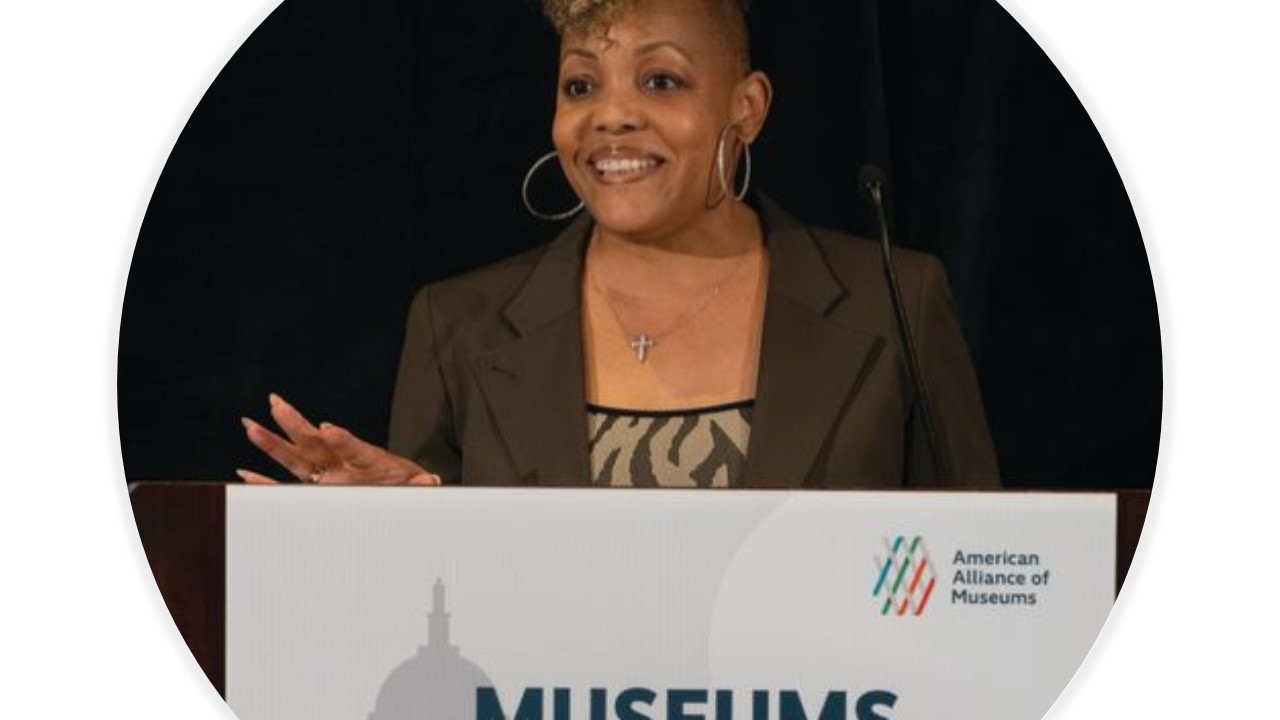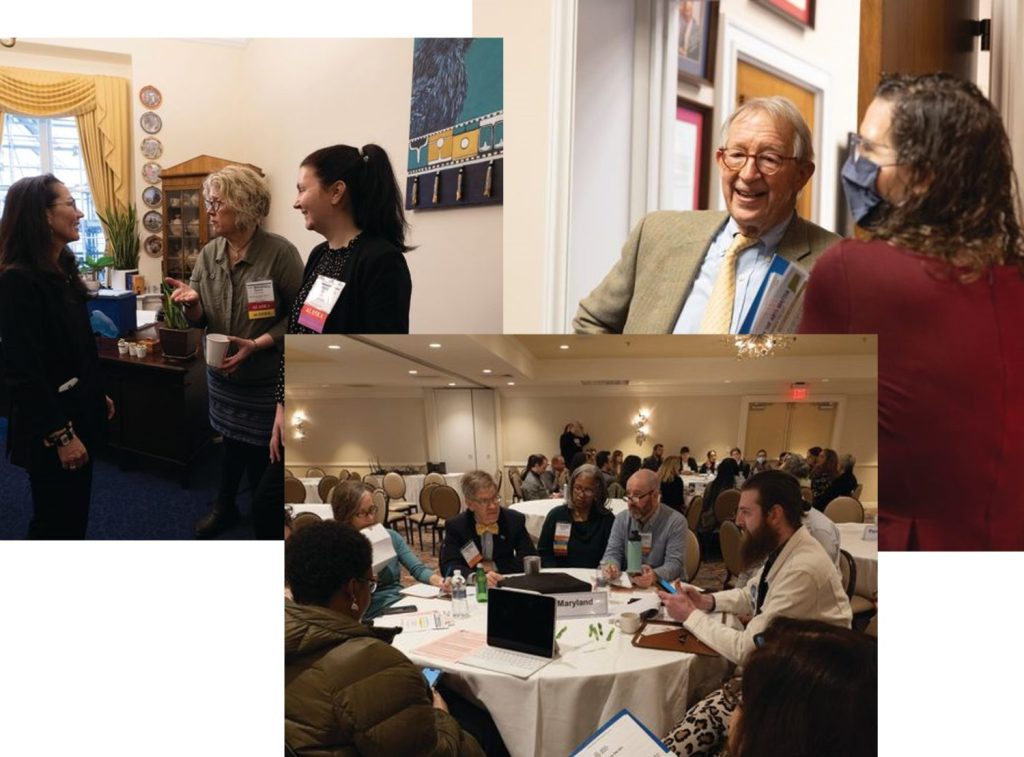
This article originally appeared in Museum magazine’s September/October 2023 issue, a benefit of AAM membership.
Key lessons on how to effectively engage elected officials from a Capitol Hill chief of staff.
Meeting with elected officials and their staff is an incredibly important and impactful way to advocate for any cause. It’s critical to democracy—and to sustaining a thriving museum field—that elected officials hear directly from the museum people they represent. While it may initially feel intimidating, there are proven techniques for effectively presenting your case to elected officials.
In recent years, Kim Rudolph, Chief of Staff to Representative André Carson (IN), has spoken to museum professionals during Museums Advocacy Day. Kim has nearly 27 years of experience on Capitol Hill—including as Chief of Staff and Legislative Director and working with the House Appropriations Committee—and oversees the operations of Representative Carson’s congressional offices in Washington, DC, and Indianapolis. Kim and her boss are great friends of the museum community, and Kim’s wit, wisdom, and expertise inspire and resonate deeply with Museums Advocacy Day attendees.
This is a summary of key tips and takeaways from her past Museums Advocacy Day remarks. Consider this a mini master class in advocating to legislators and their staff.
A Unique Opportunity to Educate
Kim always thanks museum advocates for their work “making sure that we have safe places to learn history, history of our country, history of other countries” and “for being beacons of truth in our communities.”
She also reminds us that speaking to legislative staff is a critical education process. Legislators and staff may know some things about your issues, but not everything. Meetings with legislators and staff are unique opportunities to tell them the story of your museum, in your own words.

Before meeting with legislators or their staff, take some time to prepare.
Visit the legislator’s website and social media to learn about their background and what committees and caucuses they serve on. Review their recent press statements, events, and public appearances to get a sense of that office’s interests, priorities, and ongoing engagement in the community. Having this background information can assist you in identifying common ground between your issues—such as education, history, or economic impact—and the legislator’s priorities. See AAM’s “Getting to Know Your Legislators” in the “Key AAM Advocacy Resources” on p. 39 for additional information.
Pro Tip: Every office is its own environment with its own standard operating procedures. For example, offices might differ in how duties and issue portfolios are divided among office and legislative staff, how they manage and schedule constituent meetings, what information they gather ahead of time about the issues to be discussed at the meeting, and how the legislator is staffed during meetings and events. Be flexible and follow their lead to get the most out of the relationship.
As a constituent, you have a unique advantage: serving constituents is always top of mind for legislators. Members know their districts and want to understand how your work and issues impact the district or state. Inform elected officials about the number of people you reach and serve in their district or state. Let them know how you add value, who your partners are, and how you educate their constituents. Share information that is as district- or state-specific as possible.
For example, tell legislators and their staff how many people in the district and state come to your organization every year and how many students you reach annually. Invite them to visit, and offer your museum as meeting space. You want to bring them into your organization to help get them invested in supporting it.
Basics of a Successful Meeting
A successful advocate knows who the member is, understands the issues in the district and state, and comes with a clear message. Be direct, honest, and concise in telling legislators and staff why you are there and what you or the field needs. Don’t waste legislator or staff time being shy about making your case that museums are important and worthy of public investment.
Worried about seeming pushy? Don’t be. As Kim says every year, “It’s very, very important to have an ask and to always bring and leave really good information.” Legislators and their staff expect advocates they are meeting with to have an ask.
You may not get a specific commitment during an individual meeting, but your asks are important for other reasons. They keep your issue on the radar, make the needs of your museum and the field clear, and set the foundation for ongoing communication with legislative offices. And as Kim reminds museum advocates, even if you get an initial no, keep asking. You have a right to say what you need and how you would like your tax dollars spent.
Use your time with legislators and staff wisely and, most importantly, tell your museum’s story.
Your story should let legislators and staff know how your museum is serving the community and its economic impact in the community. Explain that you are counting on them to help ensure museums are sustainable into the future.
Your meetings and interactions with legislators may be at their office, at your museum, or at a community event, lasting anywhere from a few minutes at the member’s event to a longer meeting or a tour of the museum. Prepare shorter (60–90 seconds) and longer (2–5 minutes) versions of your story depending on the circumstances.
Telling your story, with your own words and passion, not only makes an impression on the people you are meeting with, but also helps them become your surrogates and advocates within their office and with fellow legislators. Staff and legislators want and need to hear what you’re doing in the community they represent and how your work and your organization add value to their constituency. Reminder: As noted earlier, learn about your legislators’ priorities and previous activities prior to meeting with them to help inform and frame your message.
Leave your contact information so that offices can reach out if they have questions. Especially if you are meeting with staff, you want to leave materials that explain the issues you raised, how they impact you and your work, and what your needs and asks are. Providing this critical information to staff, physically or electronically, can help ensure that your message stands out among the various competing interests the offices handle.
Remember, this is your democracy, and you participate in it when you tell the people that represent you what your museum needs and what you would like to see your public dollars spent on. You’re doing really important work, and legislators and staff need to know about it.
Pro Tip: In addition to answering any questions they have, ask staff and legislators questions as well, such as how they intend to support the museum moving forward or what else they need from you to do so. If feasible, also offer the museum space as a resource. Rep. Carson’s office held its staff retreat at an Indianapolis museum and had a wonderful experience there. As Kim notes, “When people engage with museums, you can’t help but fall in love with museums.” When legislators and staff spend time in your museum, they will feel more invested in it.
The Value of Working with Legislative Staff
Do not perceive meeting with staff instead of the legislator as being pushed aside or a reflection of your issues’ importance. Legislative staff are hard-working public servants, continuing to work through very intense times. Meeting with staff is an opportunity to educate the people who have the legislator’s ear. You’re essentially talking to a legislator when you’re talking to a staffer.
Legislators’ schedules are generally jam-packed, and meetings with staff are often lengthier and more substantive. It’s critical to leave staff members with good information so they have your key points and specific requests when they report on their meeting with you.
Hearing from Kim is always empowering and inspiring, including her words of hope that “we have many, many more things in common than not.” As Kim always reminds us, this is our democracy and we are doing our part by coming to legislators and making our voices heard. She says we are all “influencers” when we speak up for museums and participate in democracy in this way.
As Kim reaffirmed again in February 2023, “The House of Representatives, where I work, is your house. You belong there. You have every right to be there.”
Key AAM Advocacy Resources
Meeting with an elected official may seem daunting, but AAM is here to help. The following AAM Advocacy Resources, and many more, are available on the AAM website to help all museum advocates speak up for museums.
Getting to Know Your Legislators
A brief guide to help you learn about your legislators.
Museums as Economic Engines
The economic contribution of museums and your state’s snapshot.
Museums and Public Opinion
National public opinion polling showing that Americans approve of lawmakers who take action to support museums.
Advocate from Anywhere
Resources to speak up and advocate for museums from wherever you are.
Alliance Advocacy Alerts
Timely updates, calls to action, and tools to help you communicate with your legislators.
Public Policy Issues
Detailed information about public policy priorities for museums and how policymakers can advance them.
Visit bit.ly/AAMAdvocacyResources to access all of AAM’s advocacy resources, including tools and ideas for year-round advocacy and engaging your trustees in advocacy.








